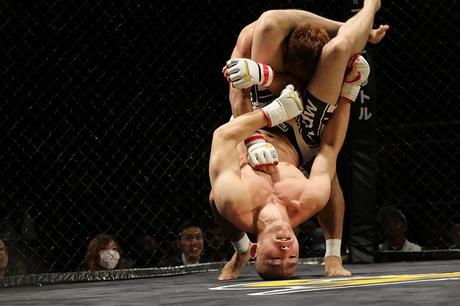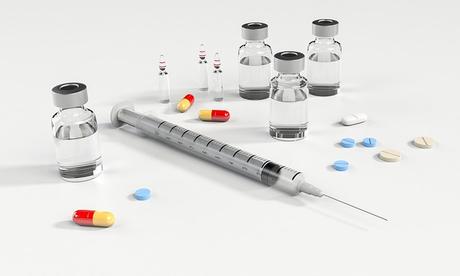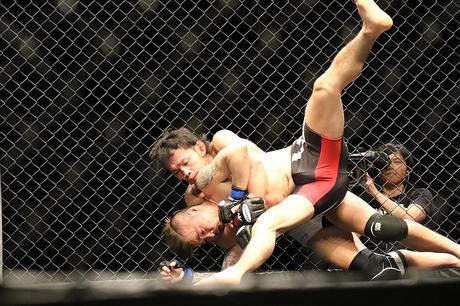Making Weight is Dangerous – Hire a professional. Article for information purposes only
To become a great fighter in the ever-evolving world of MMA, an individual requires a very specific blend of psychological and physiological abilities and skills. All modern day martial artists are superb athletes and physical proficiency structures the foundation of every distinguished champion. A fighter will only have potential if he possesses the base attributes of speed, strength, stamina, power, agility and the neuromuscular coordination and ability to acquire new skills and techniques that are required to stay at the top of the game. In addition, a fighter must posses the desire and dedication to train relentlessly everyday, and the focus and intelligence to maximise his performance within the unforgiving walls of the MMA cage.

Without a doubt, the likes of Randy Couture (back in the day), Yoel Romero and GSP possess all of the qualities listed above; they are superb athletes who display awesome technical skills as well as drive, determination and focus. These characteristics form the basis of their success, but this alone is not enough to make it to the top of the sport, and there are a number of other important factors which must be accounted for. Top MMA fighters have sport scientists, physiotherapists and nutritionists to advise them on such peripheral, yet crucial factors; one of which is ‘making weight’. Fighters not only have to be in great condition, they have to make a chosen weight class whilst retaining the capacity to fight to the best of their ability. Being able to drop 10-15lbs over a 48-hour period is perhaps one of the most dangerous aspects of the sport, whilst becoming completely hydrated and glycogen loaded in time for the fight is extremely difficult and equally as perilous. A well-planned and researched weight loss strategy can make the difference between winning and losing, even life and death.
In boxing, when Arturo Gatti signed to fight Joey Gamache at welterweight in 1999, HBO announced that Gatti had put on a staggering 19lbs since the official weigh-in. The Canadian boasted a frightening 16lbs advantage over Gamache. For a welterweight this represents an extra 10% of body mass – an enormous amount. Gatti was teeing off at will, and a series of frightening knockdowns later, Gamache was left KO-ed on the canvas. He later announced he would never fight again, in a similar fashion to Gattis’s previous under-weight victim Reyes Munoz. Gatti’s ability to lose weight rapidly had obviously given him, quite literally a massive advantage over his opponents. However his victory over Gamache sparked a huge amount of discussion and investigation into the possible merits of weighing in the day of the fight rather than 24+ hours before. Although the potential dangers of severe dehydration were acknowledged, nothing was done to prevent the trend of boxers who employed dangerous rapid weight loss techniques to gain a size advantage. This may have had fatal repercussions.

It has been suggested by many that the untimely and mysterious death of Panamanian boxer Pedro Alcazar may have been due to his rapid weight loss and ensuing weight re-gain. Alcazar death was caused by swelling of the brain, which could well have been related to an extreme amount of dehydration to make weight and subsequent rehydration for the fight. Alcazar, like many other fighters, may have been tempted to fight in a lower weight category by the prospect of having a size advantage over his opponent. His example, serves as a warning as to how dangerous this temptation can be. Attempting to loose weight rapidly is even more dangerous if a fighter does not have the knowledge or support staff to guide him/her. Weight loss is a science in its self, which should be well researched, planned and constructed to the specificities of an individual.
Early Weight Cutting in the UFC
In 2003, when Randy Couture first entered the octagon as a light heavyweight contender, he had reduced his fighting weight from 227lbs to 205lbs over a 3-month period. Manipulating his weight to the precise pound would have required a strategy for long-term and short-term weight loss.
For long term weight loss, a nutritionist or dietician can offer a plan for modifying the diet after an athlete has undergone body composition analysis and evaluation of his/her current diet. The only legitimate way to reduce body weight in the long term is to reduce caloric intake and/or increase caloric expenditure through physical activity (or to some extent supplementation).
The degree of energy restriction required to induce weight loss, will depend on body size, typical energy intake and expenditure, and the period allotted for weight loss. In general, reducing energy intake by 10-15% may be all that is necessary if an athlete is exercising daily. Tapering the caloric deficit and/or manipulating the time period during which the athlete is in negative energy balance can control the amount of weight loss induced. Creating a negative energy balance – consuming fewer calories than is expended through basal metabolic rate + physical activity – is the only way to induce a weight loss which will remain over a period of weeks, rather than hours.
A Little Help With Weight Loss (illegally)
There are a number of ways to catalyze long term weight loss and help to prevent associated muscle atrophy. Unfortunately many of the most effective methods involve the consumption/injection of banned substances, including anabolic steroids. One of the most commonly used illegal drugs is ephedrine. Ephedrine is a central nervous system stimulant and increases an individual’s metabolism by about 3%. It is often stacked with caffeine and aspirin to form a compound often referred to as ‘ECA’.
The theoretical ratio is E:C:A=1:10:4. The E and C work together to promote weight-loss, boost energy and enhance athletic performance. Aspirin is there just to prolong the effects created by the other two ingredients. ECA also has some anti-catabolic properties, which means that an athlete can retain a lot more muscle even while ‘cutting’. Side effects of ephedrine include anxiety, shaking, increased sweating, light-headedness, dizziness, light headache, gastrointestinal distress, insomnia, irregular heartbeat, increased heart rate, heart palpitations, stroke, seizures and psychosis.
ECA works best when cycled with another drug called clenbuterol. Clenbuterol is a Beta 2 Sympathomitetic and CNS stimulant. It is used in certain countries in a medical sense as a bronchodilator for the treatment of asthma. Athletes utilise the drug due to its thermogenic and anti-catabolic (muscle sparing) effects. This is down to its ability to slightly increase the body’s core temperature, thereby raising calorific expenditure. It is thought that a 1°F increase yields around a 5% increase in maintenance calories burned. It is either used on a 2 day on, 2 day off protocol or 2 weeks on 2 weeks off protocol. It should NOT be taken in conjunction with ephedrine, it should be cycled i.e. taken during the 2 weeks off. Side effects are similar to those experienced with ephedrine and is therefore potentially fatal.
In recent years athletes have also begun to use thyroid drugs such as Cytomel in their quest to loose body fat. Obviously these drugs influence the thyroid gland to promote fat loss. Thyroid hormones are often referred to as the metabolic regulators of the body.

High levels of Cytomel speed up the metabolism of an individual, allowing him to burn more calories and use calories more sufficiently. Both hyper-and hypothyroidism can have severe consequences on an individual, such as goiters (enlargement of thyroid gland) and other nasty stuff. In addition, misuse of this compound can leave you dependent on exogenous thyroid hormones for the rest of your life. So some caution and research is required before putting Cytomel in your body. Generally cycles should be limited to 4-6 weeks tops, many bodybuilders recommend 3 weeks of use at a time and alternating cycles with 3-week cycles of clenbuterol.
It is also important to taper doses up and down during a cycle to avoid a massive ‘crash’ when you come off. Other illegal drugs such as DNP (2,4-Dinitrophenol) exist but are extremely, extremely dangerous and have mad side effects. DNP causes the body to uncouple oxidative phosphorlylation from ATP production. In essence, normally, people metabolize food to produce energy (ATP). DNP causes the body to metabolise food but instead of producing energy (ATP), heat is generated; so much heat that the organs can actually cook in the body! So, if you don’t mind liquefied organs, DNP will help melt away body fat, literally. Quality! Oh, and your body can’t tolerate many carbs which is not ideal when you are training hard. So I definitely would not recommend this one, although I am sure many bodybuilders would!
There are also a number of legal supplements that are generally less effective but a lot safer. These include Conjugated Linoleic Acid (CLA), Yohimbine, Octopamine, Tyramine, Green Tea, Synephrine, chromium and Caffeine. Few nutritional supplements advertised to “burn fat” have ever been proven effective. Only two nutritional supplements, chromium and pyruvate, have undergone scientific scrutiny as weight loss agents – but in obese subjects, not athletes. Creating a negative energy balance remains the most effective strategy for weight loss, and supplementation of any sort should not be necessary. So if you want to stay nice and healthy, you need to scrutinise and manipulate your diet so that you are consuming less calories than you expend.
Weight Loss with Dehydration
Whereas long-term weight loss can be a relatively safe and healthy procedure, rapid weight loss can never be. Rapid weight loss can have many effects upon a person, all of which influence athletic performance. Increased levels of food restriction during the two weeks preceding the contest can accelerate weight loss. Reducing carbohydrate intake can cause a significant drop in bodyweight because it is stored with water.
However food restriction can’t cause a 5 or 6 pound drop in several hours like is often seen in the wrestlers, boxers and MMA fighters who rely on dehydration to make weight. A number of publications have addressed this issue, including the Position Stands of American College of Sports Medicine (ACSM) on Weight Loss in Wrestlers, and Exercise and Fluid Replacement. In severe dehydration, i.e. >5% weight loss, physiological systems are progressively compromised and the risk for cardiovascular or renal problems is increased. Athletes and individuals who are heat adapted may tolerate dehydration better, but the effect if any, is small.
Severely dehydrated athletes will experience reduced blood and plasma volumes, cardiac function during submaximal work (e.g., higher heart rate, smaller stroke volume, and reduced cardiac output), thermoregulary capability, and renal blood flow and renal filtration. Without sufficient fluid in the body, the ability to cool the body by sweating is compromised, thereby increasing the risk of heatstroke. These factors can lead to poor performance, but more importantly can endanger the athlete’s life. Combined with restriction of energy (caloric) intake rapid weight loss can also lead to cardiac problems, reduced immune function, pancreatitis, and kidney impairment and damage.
Sodium loading and depletion is a technique for dehydrating the body that originated from bodybuilding. The explanation of this technique is a bit hard going, but please try and bear with it. Sodium causes the body to retain water. In the body sodium is present in large quantities compared to potassium and other ions. As a result the body’s cells are always trying to pump sodium out and take potassium in. To do this, there are what is called sodium potassium pumps. So sodium is constantly pumped out and potassium is constantly pumped in. For every 3 molecules of potassium that come in 2 sodium molecules are pumped out. When an individual loads sodium, the sodium pumps have to work harder to pump out all the sodium that comes into the cell. Then when the sodium intake is reduced, the body will continue to pump out sodium at that fast rate. Less sodium inside the cells, means less water retention and thus a lower body weight. Hope you followed! Unfortunately sodium is vital for muscular contraction, and therefore any sodium restriction must be embarked upon with caution.
Dehydration & Illegal Drugs for Weight Cutting
With large fluid losses during the dehydration process, there will also be electrolyte losses, which could further affect muscle function and plasma volume and result in muscle cramping. Despite this athletes often resort to the use of diuretics to further increase weight loss. Diuretics such as Lasix are often used. Lasix is prescribed to reduce swelling in the body caused by congestive heart failure, liver disease, or kidney disease.

Chemically, it is 4-chloro-N-furfuryl-5-sulfamoylanthranilic acid. The active ingredient is Furosemide and it is available as white tablets for oral administration in dosage strengths of 20, 40 and 80 mg. Taking just one or two 40mg tablets can result in fluid loss of between 5 and 8lbs. It goes without saying that this is extremely dangerous. A legal diuretic is dandelion root, although legal does not mean safe! Dandelion is sometimes used for treating high blood pressure or poor digestion by stimulating the circulation of blood to the body. Dandelion also has some anti-inflammatory properties which may help alleviate inflammation and muscle spasms, plus it acts as a mild laxative relieving constipation. Dandelion, contains a high concentration of potassium, therefore it will not deplete the body of potassium as much as some other diuretics when used for weight loss. A typical dosage of dandelion root is 2 to 8 g 3 times daily of dried root; 250 mg 3 to 4 times daily of a 5:1 extract; or 5 to 10 ml 3 times daily of a 1:5 tincture in 45% alcohol. The leaves may be eaten in salad or cooked.
For some athletes, diuretics alone are not enough, and other, even more extreme methods may be employed. Glycerine suppositories are allegedly used in some sports to loose an extra 2 or 3lbs of bodyweight. Glycerine suppositories pull water from the intestines, into the stool, and stimulate the intestines to expel the faeces. Yes, you shove them up your ass then wait to do a monster turd! Not for me thanks.
Moving on…Preparation H. This is used by many body builders to remove water from specific areas. Allegedly the yeast cell extract it contains draws water out from under the skin. However, this is impossible to verify, there is no research to support this theory, and I wasn’t up for testing it on myself (sorry). Something to consider is colonic irrigation (seriously!). It is said to remove pounds instantly by clearing years of built up undigested waste from the intestines. But this would not be something to try the day before a fight! Ideally all weight loss strategies will have been pilot tested months before the fight.
A fighter needs to establish a long-term weight management plan months before a fight. It is also important that the effects of weight loss are monitored. This includes effects on cognitive (e.g. concentration) and emotional (e.g. moods) functioning, stress on relationships, and physiological effects should as resting heart rate and blood pressure. Obviously weight itself should be monitored frequently so that it is either decreasing at a steady rate, or not increasing at all. As for rapid weight loss, several studies have shown that after severe dehydration even using the most optimal replacement fluids, rehydration takes 24 hours or more. Likewise, after fasting, restoration of energy stores can’t be accomplished in a day. The athlete and his support team should consider this carefully.
Well, there we have it. I hope that this article has been both informative and enjoyable to read. Weight loss is a serious business that should not be overlooked or dismissed as simply skipping for a few hours in 10 layers of waterproofs. Have a long term plan, stick to it, and don’t do anything stupid!
Disclaimer – I wrote this article for a MMA Magazine in 2004. I don’t recommended anything mentioned above!
A specific weight loss (legally) manipulating water consumption:
MMA Fighter’s Weight Loss Diet
To lose around 15lbs in a week (depending on current weight -remember this should be done with medical & professional supervision)
6 Days out from the weight in:
Day 1:
Increased water consumption
This effects the regulation of aldosterone. The hormone which influences water retention and sodium:
Drink 9 litres of water (some people recommend distilled water)
Eat around 50-60g of carbs
Eat plenty of protein and fats, within 3 or 4 meals, no snacks
Plenty of organic veg, omega 3 etc. You’ll need nutrient dense food to stop you feeling too run down.
No Salt
Day 2:
Drink 4 litres of water
Eat around 50g of carbs
Plenty of protein and fats, within 3 or 4 meals, no snacks
No Salt
Day 3:
Drink 4 litres of water
Eat around 50g of carbs but no starches or refined sugar
Plenty of protein and fats, within 3 or 4 meals, no snacks
No Salt
Day 4:
Drink 2.5 litres of water
Eat around 50g of carbs but no starches or sugar
Plenty of protein and fats, within 3 or 4 meals, no snacks
No Salt
Day 5:
Drink 2.5 litres of water
Eat around 20-40g of carbs but no starches or sugar
Plenty of protein and fats, within 3 or 4 meals, no snacks
last meal by 6pm
No Salt
It is generally agreed that you should be about 3-6lbs over your weigh-in weight, the time you go to bed before the night before the weigh-in.
Weigh in Day:
2 very small meals
less than 10g of carbs
No water or salt until weigh in
Weight Loss through Sweating – VERY dangerous and potentially damaging to performance
Be aware of physical effort and energy expenditure if making weight for a fight.
You can do low intensity cardio wearing heavy or waterproof clothing the day of your weigh in.
Weigh yourself at 5 minute intervals.
You can soak in a hot bath the night before the weigh in. Weigh yourself at 10 minute intervals.
Put everything in the water, except for your mouth and nose. Towel off after each interval and weigh yourself, do not shower, as this can make you gain more weight.
Take 5-10 minute intervals between 10 minute bouts in the bath.
MAKE SURE YOU HAVE PROFESSIONAL SUPERVISION
This weight loss is short-term only
See our article on Boxing Nutrition & Boxing Diet Plans By Clicking Here

